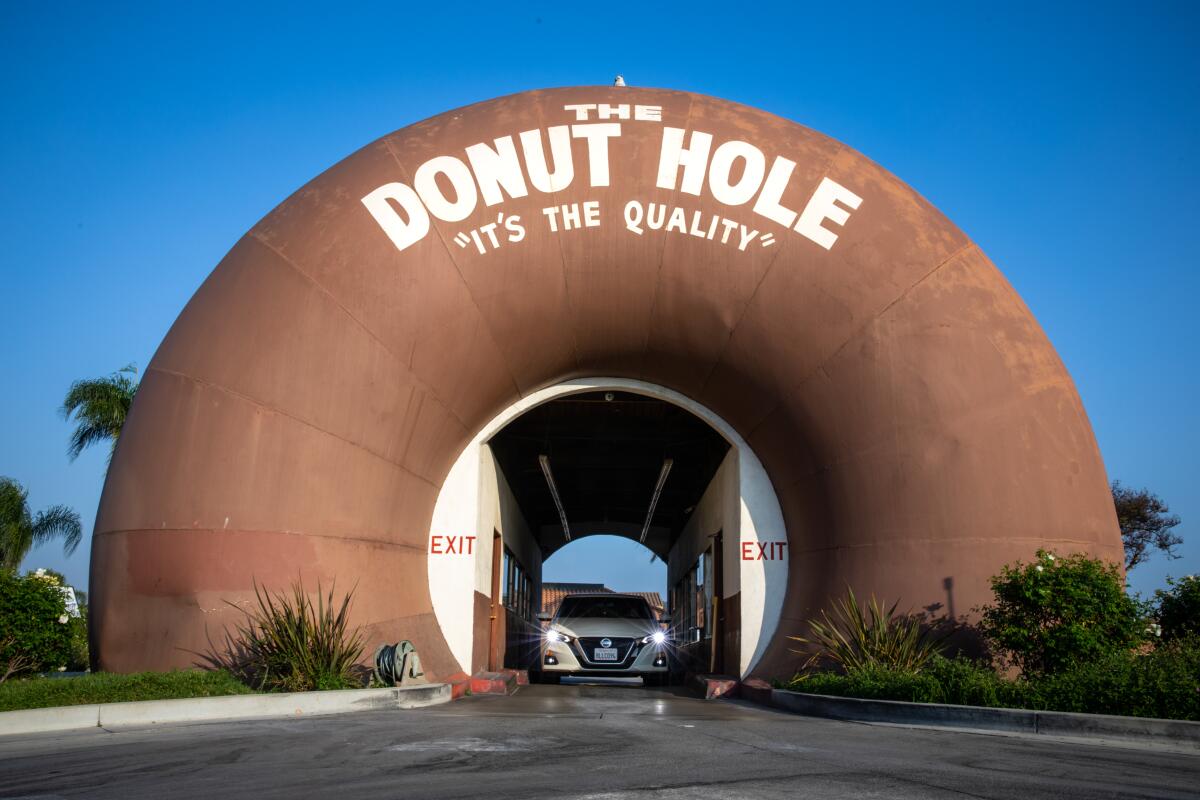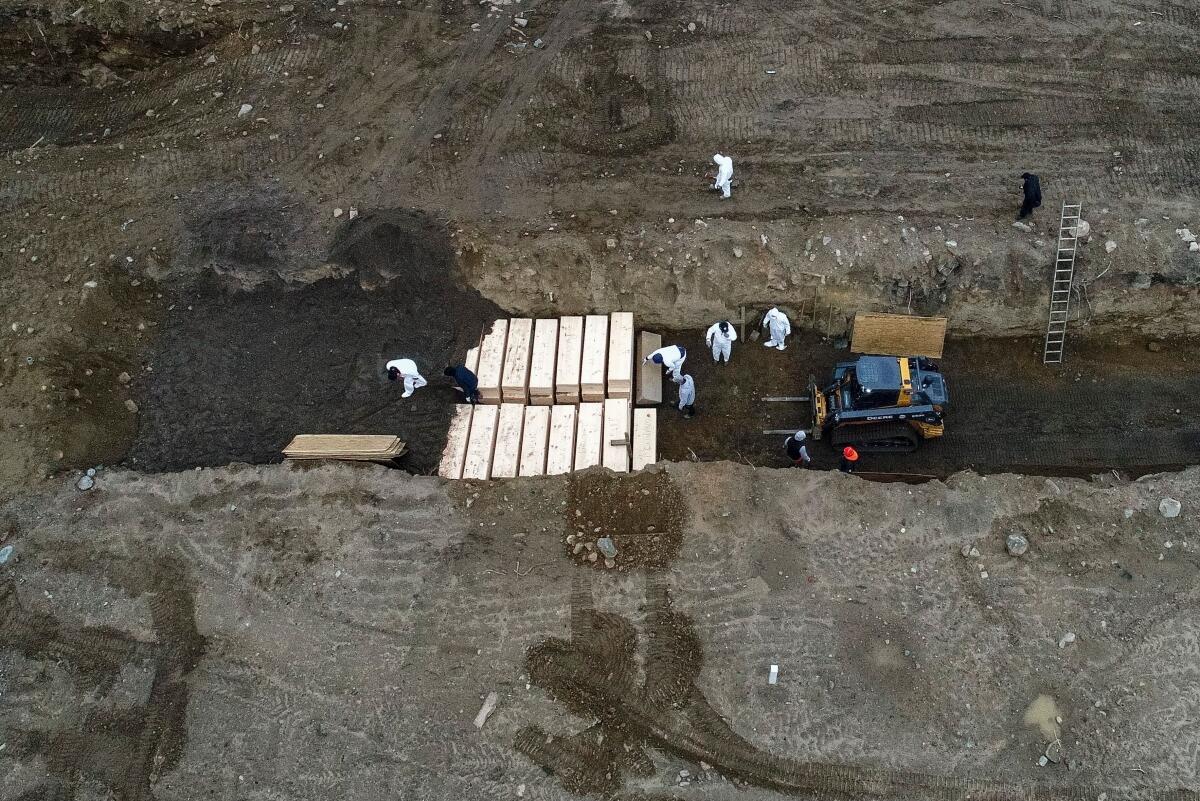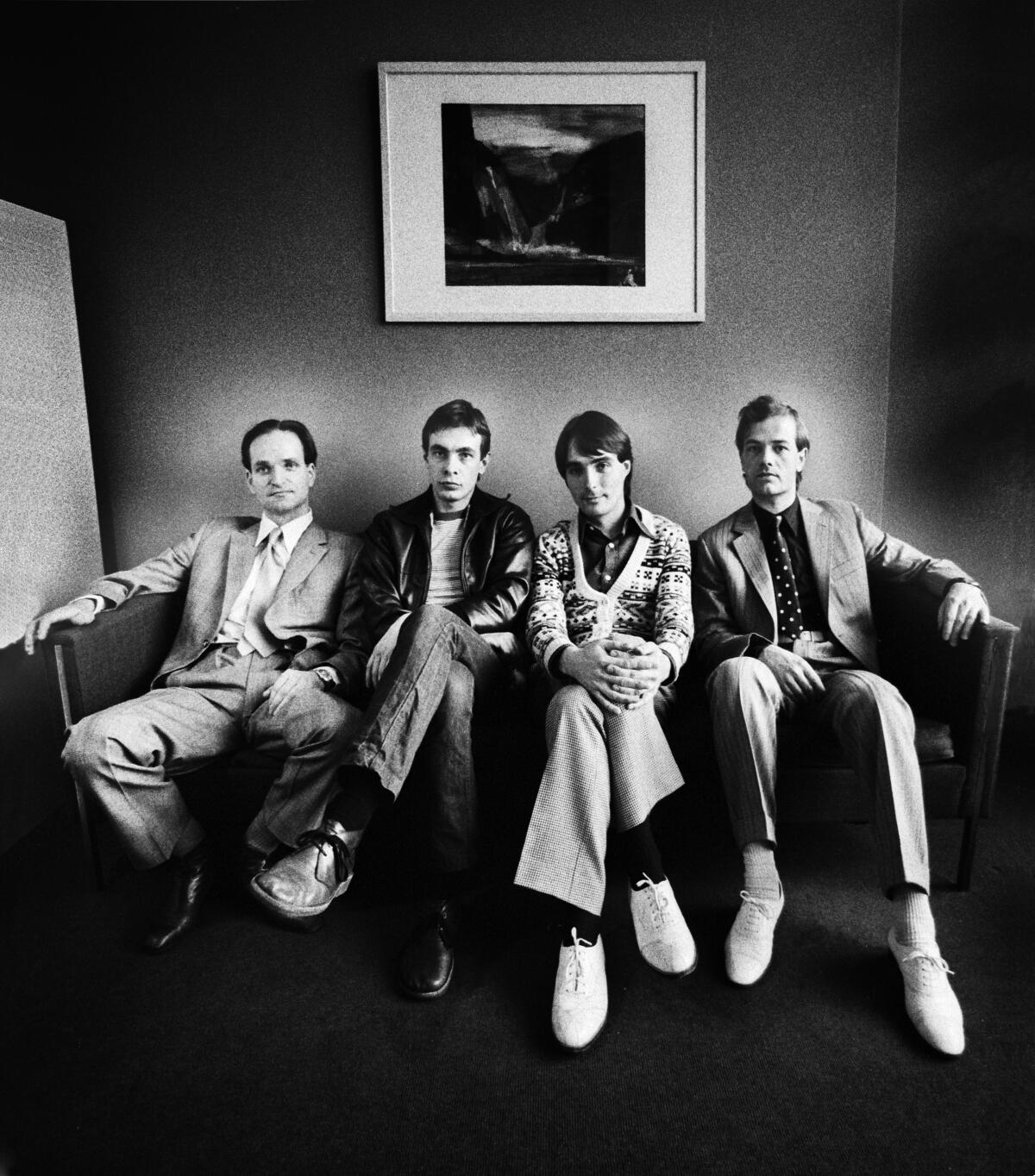Essential Arts: Bring back plague monuments, says our Pulitzer-winning critic
- Share via
Greetings from the timeless void of quarantine, where we all feel like astronauts who have been in space just a little too long. I’m Carolina A. Miranda, staff writer at the Los Angeles Times, with your essential guide to all things arts — and operatic krumping.
Essential image
Living through this pandemic has made it a good time to reflect on other disasters. Late last month, Various Small Fires in Hollywood opened an online exhibition by painter Jessie Homer French, an artist based in Palm Desert. “Chernobyl,” inspired by the artist’s obsession with the Chernobyl exclusion zone, had been in the works six months ago — before the coronavirus went global.
Make the most of L.A.
Get our guide to events and happenings in the SoCal arts scene. In your inbox every Monday and Friday morning.
You may occasionally receive promotional content from the Los Angeles Times.
The paintings, which show wildlife reinhabiting the area around the Chernobyl power plant, feature equal doses of whimsy and foreboding. See the works online here. Or wait until late June, when the gallery plans to slowly reopen by appointment.
While you’re at it, absolutely, positively read this terrific travelogue by Mark O’Connell about being a tourist in Chernobyl.
Prizes and plagues
The big news around our various Times home offices this week is that Christopher Knight, a voice for art at this paper since 1989, won the Pulitzer Prize for art criticism! (It’s about time, Pulitzer jury.) You can find his winning columns here. Special thanks to LACMA for generously supplying much of the material.
The day after we celebrated Knight’s win (by subjecting him to a Zoom meeting), he was back at work with a dispatch stating that perhaps it’s time to bring back the plague column. The public monuments, popular in 17th and 18th century Europe, served to mark the end of contagions. Knight has some ideas about where the first sculpture can be planted: “near the corner of Fifth Avenue and 56th Street in New York, the city where the disaster has been the cruelest” — and, coincidentally, the location of Trump Tower.
Sort of related: The Pulitzer for drama went to Michael R. Jackson’s “A Strange Loop,” a play within a play about a queer, black writer who works a day job he hates while writing a play about a queer black writer staging a play.
And Anthony Davis won the Pulitzer Prize in music. The composer, who scored the opera “The Central Park Five” (which was staged by the Long Beach Opera last year), was in a Zoom meeting with fellow faculty members at UC San Diego when the he received the news that he’d won. “I pushed the wrong button,” he says, “so the whole faculty heard the announcement.” One of his colleagues described it as “the best Zoom bomb ever.”
Plus, in other Pulitzer news: I’d like to offer my hearty congrats to Times reporter Molly O’Toole, who took home a Pulitzer for an audio story about U.S. border policy. And many congrats to Times finalists in other categories: columnist Steve Lopez, environmental reporter Rosanna Xia and the team that worked on the Conception boat fire (a finalist in breaking news). Proud to work with this absolutely incredible band of pirates!
Art in the age of corona
The pandemic has arts organizations placing a surfeit of plays, operas and theatrical readings on the internet. But Times theater critic Charles McNulty says he finds himself with a “diminished” appetite for these televised dramas amid the real-life drama of the pandemic. “I have enough on my viewing plate and would rather not live glued to a screen,” he writes, “as though my existence were a cramped economy flight between birth and death.”
Enjoying this newsletter? Consider subscribing to the Los Angeles Times
Your support helps us deliver the news that matters most. Become a subscriber.
As a reopening looms, performing arts groups such as the L.A. Phil are faced with the challenge of trying to get subscribers to renew — while also being attentive to medical uncertainty. The Times’ Deborah Vankin reports on the delicate balancing act of soliciting patrons in the midst of a pandemic.
Porch concerts appear to be taking off. Late last month, The Times’ Jessica Gelt reported on a Pasadena couple that were staging informal shows on their porch. Now she reports on two L.A. Phil musicians, Jonathan and Cathy Karoly, who have done the same for their neighbors. Our video team was on hand to capture some of the show.
I’ve been spending some quality time in drive-throughs and drive-ins. Over the years, these common bits of SoCal infrastructure had been fast losing status, subjected to bans and increasing regulation. But the lockdown has turned them into curious bubbles of normalcy. They are the socially distant design we’ve been living with all along. And, as I report this week, they are having a bit of a moment.

If you follow me on Twitter, you probably know I have developed a thing for koala cams while in quarantine. In a piece in Frieze, writer Orit Gat explains our animal cam fascination.
Global dispatches
The San Francisco Chronicle surveys various arts and entertainment organizations, including the San Francisco Symphony, San Jose Opera, the American Conservatory Theater and the San Francisco Museum of Modern Art, among many others, to see how they are faring.
Some art galleries in Northern California are claiming that they are essential businesses and are reopening.
In New York, the Metropolitan Opera, facing losses, will put 41 staff members on indefinite furlough and 11 others have been cut to part-time positions.
Plus, writer Cole Sweetwood parses the Metropolitan Museum of Art‘s annual report and looks at the ways in which philanthropic capital is deployed to support institutions but not the people that staff them. This is essential reading.
Nina Siegel looks at what it means for a museum to shut down.
American Ballet Theater is moving its spring gala to YouTube, with quarantine performances by Tony Bennett and Cynthia Erivo. Also moving online is the Merce Cunningham centennial celebration.
In late March, the FBI warned of a possible surge in hate crimes against Asians and Asian Americans as a result of the pandemic. In response, art workers have come together for a project to fight discrimination.
“If people could only see what it is like in the hospitals, they would stay at home.” Art historian Sarah Elizabeth Lewis explores what it means to not be able to visualize the pandemic’s most terrible moments, which are taking place in hospitals and treatment centers largely out of journalists’ reach.

Rebecca Onion interviews literary scholar Elizabeth Outka about why the cultural traces of the 1918 flu pandemic feel so faint. “Diseases are recorded differently by our minds than something like a war,” says Outka. “By their nature, diseases are highly individual.” A fascinating interview.
As cities move toward reopening, Henry Grabar has a great idea for dense places such as New York: ditch the cars and turn over the streets to people. “Thirty-six percent of Manhattan is street space,” he writes. “It’s the most valuable land in the world, and the city gives it away for free, provided you use it for nothing but your car.”
Siddhartha Mitter examines the future of the biennial. “The lurking question,” he writes, “is whether the biennial model still makes sense in a post-pandemic world.”
The best arts online
The L.A. Phil‘s 100th birthday bash, Ralph Fiennes in Shakespeare’s “Antony & Cleopatra,” and James Earl Jones and Raul Julia in a production of “King Lear” — The Times’ Matt Cooper has been rounding up all the quarantine must-sees. You can find his daily missives at “Things to Do: Arts & Culture.”
Mark Swed turned me on to 3e Scène, a site created by the Paris Opera that features original online works strong on dance, music and animation. My favorite is this incredible dance piece inspired by Jean-Philippe Rameau’s opera “Les Indes Gallantes” and krumping, the dance style that emerged out of South L.A.
On Instagram, I’ve been very much enjoying Hugo Crosthwaite’s stop motion animations of his quarantine drawings.
Also a fave: artist Mary Reid Kelley and Pat Kelley’s super surreal Insta videos.
Passages
Kerry English, a pediatrician and beloved theater patron, who sat on the boards of the Ojai Playwrights Conference and Rogue Machine, has died at 74 from complications of ALS. The Times’ Jessica Gelt captures the tributes that poured in from all corners in the wake of his death: “He wasn’t just someone who showed up at your shows,” says Veralyn Jones, of Lower Depth Theatre, “he was someone who invested in you as an artist.”
Rosalind Elias, a U.S. mezzo-soprano who sang in 687 performances in 54 roles at New York’s Metropolitan Opera over 42 years, has died at 90.
Jean Erdman, a Modern dancer and choreographer whose work often explored the inner lives of women, has died at 104.
Florian Schneider, who co-founded the seminal German electronic band Kraftwerk, influencing generations of musicians, has died at 73 of cancer. In his obituary, Times music writer Randall Roberts writes that “it’s hard to overstate” the ways in which their music “transformed” pop music. It was, says Human League’s Martyn Ware, “the soundtrack of cities.”
New York Times critic Jon Pareles rounds up 10 essential Kraftwerk songs.

Satish Gujral, a versatile Indian artist whose early canvases reflected the tumultuous partitioning of India in 1947, and who later worked as sculptor and architect, is dead at 94.
In other news
— Good listening: Tyler Green interviews Blake Gopnik about his new behemoth biography of Andy Warhol.
— Great reading: this gangbusters profile of Val Kilmer by Taffy Brodesser-Akner.
— More reading: five essential books to understand mid-century design.
— To go with all that reading and listening, this 1862 whiskey cocktail, courtesy of the Huntington Library.
— The Huntington has also got a chill-out playlist on Spotify.
And last but not least ...
For those grieving loved ones, Yo-Yo Ma offers some beautiful music: Albinoni’s Adagio in G Minor.
The biggest entertainment stories
Get our big stories about Hollywood, film, television, music, arts, culture and more right in your inbox as soon as they publish.
You may occasionally receive promotional content from the Los Angeles Times.




